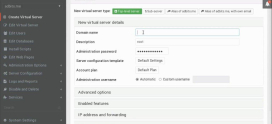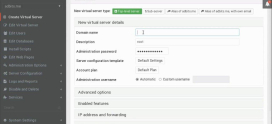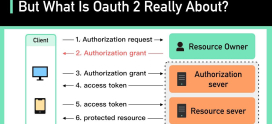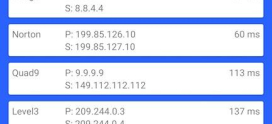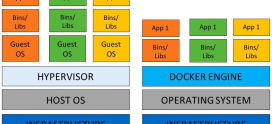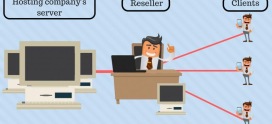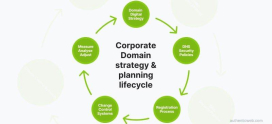
How to Customize CloudLinux Security Policies for Your cPanel Server
Are you worried about the security of your cPanel server? You’re not alone! Many web hosting administrators grapple with ensuring that their servers remain safe from a plethora of online threats. It can feel overwhelming, right? With hackers constantly on the lookout for vulnerabilities, it’s crucial we stay a step ahead. This is where CloudLinux shines, offering a comprehensive suite of security features to bolster the integrity of your server.
Customizing security policies in CloudLinux can feel like navigating a labyrinth. But you are not left to wander alone. In this guide, we’ll walk through the steps to tailor these security measures specifically to your needs. Just like customizing your house to make it safe and comforting, customizing your CloudLinux policies will provide protection and peace of mind. Ready to dive in and lock down your server’s security? Let’s get started!
Understanding CloudLinux and Its Significance
Before we jump into customizing security policies, let’s take a moment to understand what CloudLinux is and why it matters to your cPanel server.
What is CloudLinux?
CloudLinux is an operating system tailored for shared hosting environments. It enhances the security and stability of your servers by isolating each user into their own space. This means if one account experiences issues, the others remain unaffected, like different rooms in a house insulated from a fire in another room.
Why is Security Important?
Security is the foundation of trust in the digital world. If your server is compromised, it could lead to data loss, theft, or disruption of services. Imagine if your home was broken into; the feelings of violation and insecurity can be overwhelming. The same applies to your online presence! Protecting your data and maintaining the trust of your clients or visitors is paramount.
Getting Started with CloudLinux Security Policies
Now that we’ve established why CloudLinux is vital, let’s discuss how to customize its security policies. This is where you can shine as a web host administrator!
Accessing Security Policies
First, you need to access the security policies in your CloudLinux settings. Login to your WHM, and look for the CloudLinux LVE Manager. This is where you can fine-tune your security settings.
Customize PHP Settings
One of the first things you might want to consider is customizing the PHP settings.
- PHP Selector: Allows you to choose which PHP version each user can run, helping to mitigate potential vulnerabilities associated with outdated versions.
- PHP Security Options: Options like disabling certain functions (e.g., shell_exec, exec, etc.) can prevent script exploitations.
Implementing LVE Management
Lightweight Virtual Environment (LVE) is a core component of CloudLinux, enabling you to allocate resources to each user. Properly configuring LVE is key to maintaining a secure hosting environment.
Setting Resource Limits
By limiting memory usage, CPU time, and I/O, you prevent any single account from becoming a threat to the stability of your overall server. It’s akin to ensuring that each person in a household has their fair share of the resources to prevent conflicts.
Isolation of Users
One of CloudLinux’s standout features is the isolation it provides. This means if one user starts acting maliciously or their account is compromised, their actions won’t affect others. Think of it as individual firewalls around each room in a big building—each one has its own protection against the outside elements and potential dangers.
Monitoring Security and Performance
Keeping an eye on security is vital for long-term protection. CloudLinux provides various monitoring tools that make it easier. Regular checks can help you spot issues before they escalate.
Using the CloudLinux Dashboard
The CloudLinux dashboard offers a plethora of insights. You can view active sessions, resource usage, and even receive alerts about potential security breaches. More knowledge leads to a safer server!
Regular Updates
Security threats evolve, and so should your defenses. Ensure your CloudLinux, as well as your other server components, are kept up to date. This is much like maintaining a garden—if you stop weeding and watering, chaos ensues!
Setting Up Additional Security Features
Custom security policies don’t stop at basic configurations. There are advanced options to reinforce your server’s defenses.
ModSecurity and CSF Integration
Integrating ModSecurity with CloudLinux is a superb way to add an additional layer of security. This is a web application firewall that helps to block security threats and unwanted traffic. Coupling this with ConfigServer Security & Firewall (CSF) creates a robust security environment.
Two-Factor Authentication (2FA)
Enabling 2FA for your WHM and cPanel accounts is essential. It acts as a double lock on your door. Even if someone gets their hands on your password, they still need that second piece of verification to get in.
Getting Help from DarazHost
Sometimes, it’s best to consult with the experts. If you feel unsure about configuring your CloudLinux security policies, consider reaching out to hosting services like DarazHost. They offer professional assistance and tailored solutions to meet your security needs effectively.
Conclusion: Your Security Matters!
Customizing CloudLinux security policies doesn’t have to be an intimidating task. With the right approach and understanding, you can create a secure environment for your cPanel server that protects your data and your users. Consider implementing the strategies discussed, keeping up with the evolving threats, and, when in doubt, seek out support from trusted services like DarazHost. Your online safety is worth every effort!
FAQs
What is CloudLinux?
CloudLinux is a specialized operating system that enhances the security and stability of shared hosting environments.
Why should I customize security policies?
Customizing security policies allows you to address specific vulnerabilities and ensure your server remains secure against evolving threats.
What are LVE and its advantages?
LVE stands for Lightweight Virtual Environment, which isolates users, better managing resources and enhancing server security.
How can I monitor my server’s security?
You can use the CloudLinux dashboard, which provides insights into active sessions, resource usage, and alerts for security breaches.
Is it necessary to update my security settings regularly?
Yes! Regular updates are crucial to keeping your server protected from new threats.
What is ModSecurity?
ModSecurity is a web application firewall that protects against various threats by filtering and monitoring HTTP traffic.
How can I enable Two-Factor Authentication?
You can enable 2FA in the settings of your WHM and cPanel accounts, adding an extra layer of security.
What should I do if I need help customizing settings?
If you need help, consider reaching out to hosting services like DarazHost for Professional assistance and tailored solutions to effectively meet your security needs.


